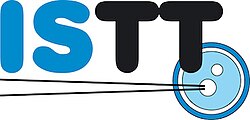 | |
| Abbreviation | ISTT |
|---|---|
| Formation | 2006 |
| Founder | Lluís Montoliu, Belén Pintado |
| Founded at | 2006 in Spain (incorporated in 2013 in the USA) |
| Type | Scientific society |
| Purpose | To foster and stimulate research, communication, and technology exchange in transgenic technologies |
| Headquarters | Kansas City (KS), USA |
Region served | Worldwide |
| Membership | ca. 700 members (as of May 2025) |
President | Rebecca Haffner-Krausz |
Vice president | Aimee Stablewski |
Main organ | Transgenic Research |
| Website | www |
The International Society for Transgenic Technologies (ISTT) is an organization dedicated to advancing research, communication, and technology exchange regarding transgenic technologies. [1] [2]
